Swedish mashed potatoes are a must-have side dish with meatballs. The velvety smoothness of perfectly mashed potatoes forms the foundation; addition of butter, milk, and a touch of nutmeg elevates the taste to new heights.
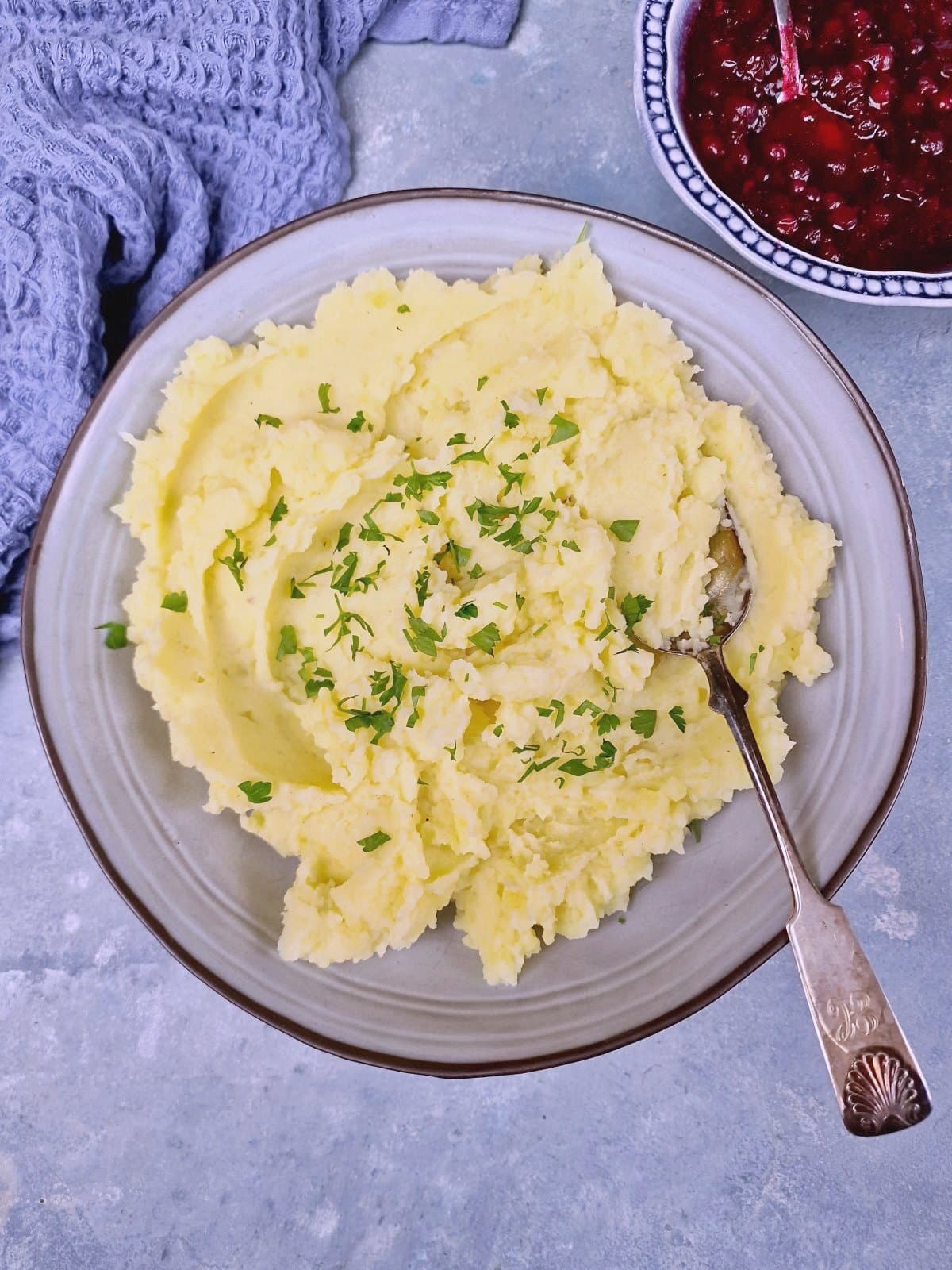
Why you´ll love this recipe
- Versatile. You can pair mashed potatoes with many dishes. It can also serve as a standalone comfort food with brown gravy. This recipe is easy to customize with additional ingredients.
- Affordable. With simple and readily available ingredients like potatoes, butter, and milk, this recipe offers a delicious and satisfying meal without breaking the bank.
- Satiating. Potatoes fill and leave your hunger at bay.
- Great for left-over recipes. This can be repurposed as a topping for shepherd's pie, incorporated into savory pancakes, or used to create potato croquettes.
Ingredients
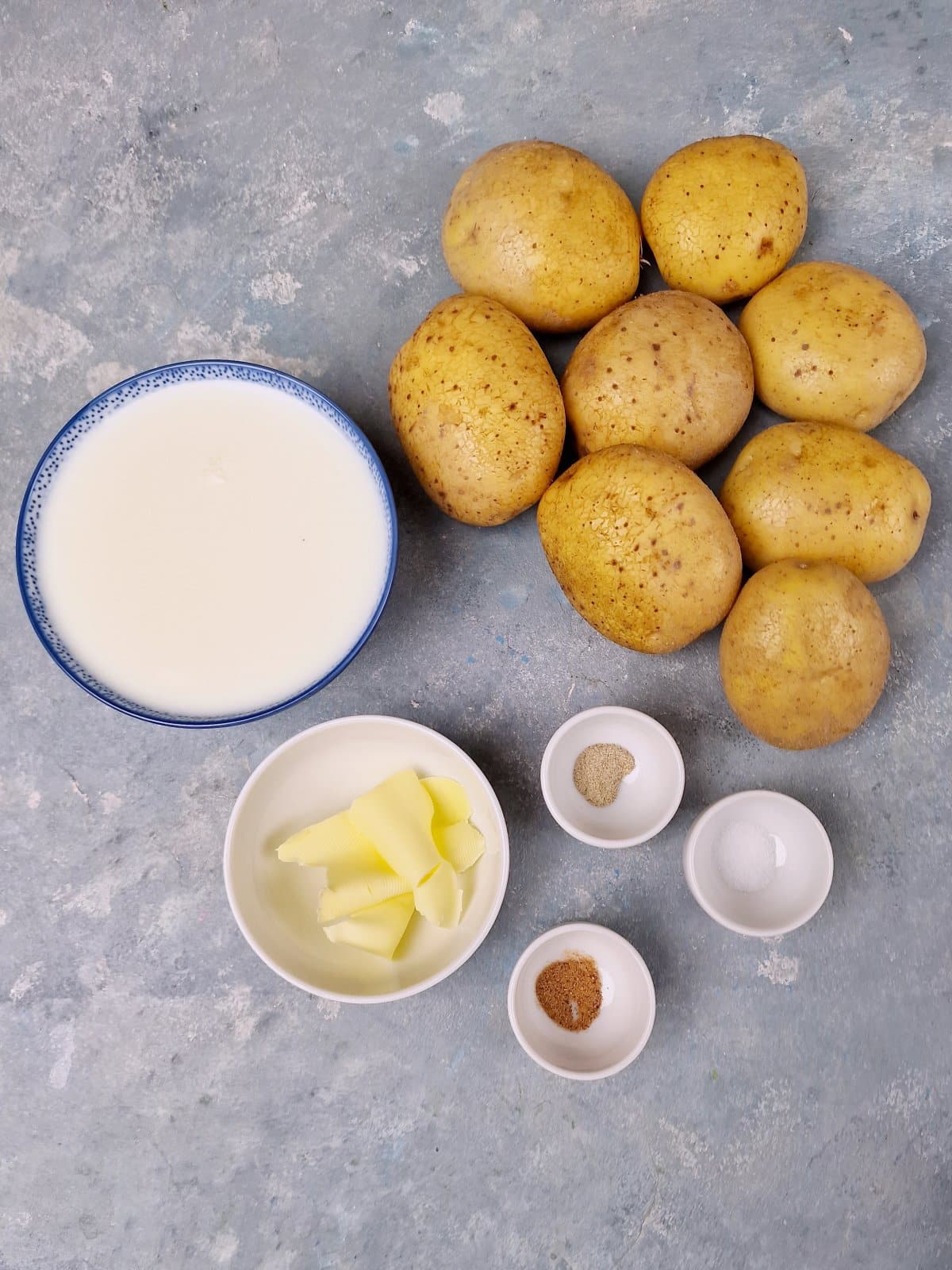
- Starchy potatoes-starchy potatoes become the best mash
- Full-fat milk. You can use cream to make an even more indulgent mash.
- Butter. It can be replaced with margarine.
- Salt
- White pepper
- Nutmeg- this gives the mash its special "Swedish" flavor.
Tools: A potato ricer tool is best for making mash. This results in a very smooth consistency mash. I use a traditional hand masher, this works also fine, but some clumps can remain in the mash.
Instructions
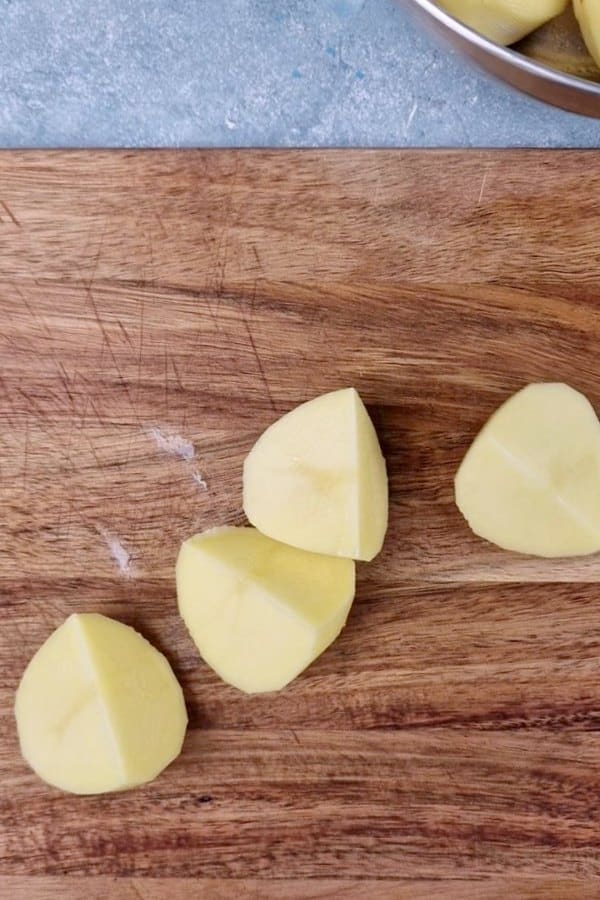
- Peel the potatoes and rinse in water. Chop into same-size chunks.
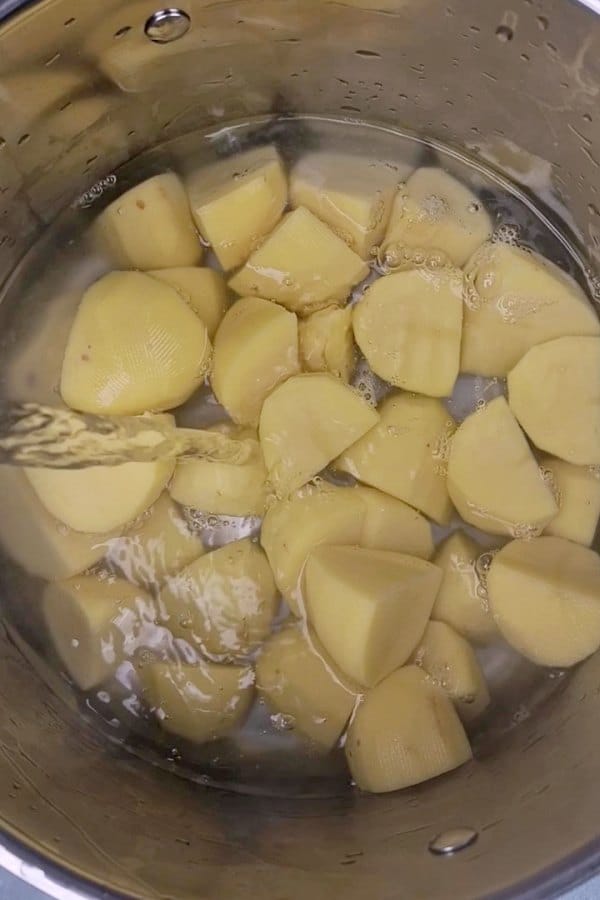
- Add the chunks into a large pan. Cover with water and add 1 teaspoon salt. Bring to a boil and boil until soft, around 20 minutes. Drain the potatoes using a colander.
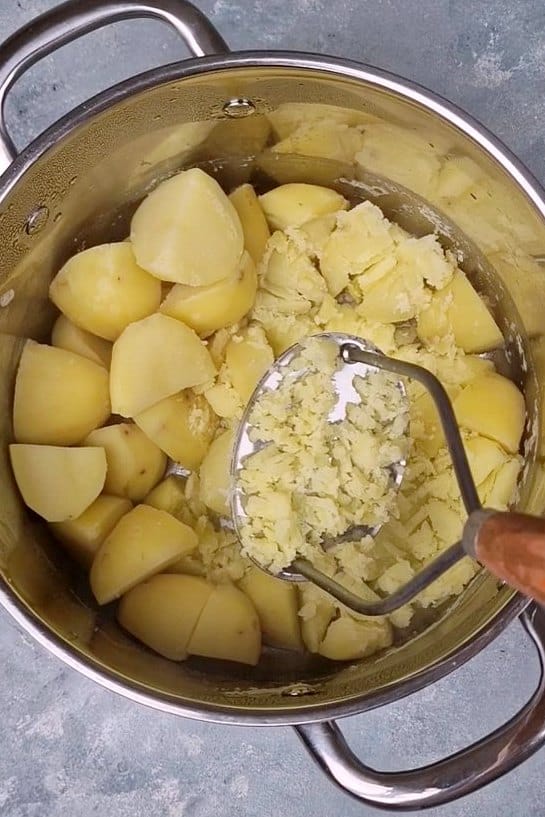
- Push the potatoes through a ricer or use a potato masher tool.
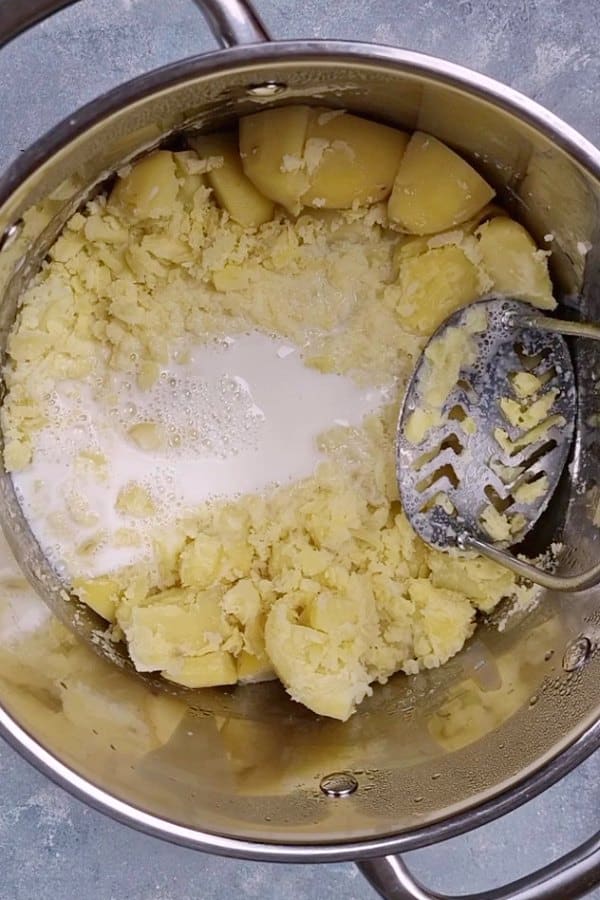
- Add warmed milk, butter, and spices and mix with the potato masher. If you used a ricer, you can use a hand mixer to beat the mash gently to get the milk and butter mixed. Decorate with some chopped parsley or chives if you want to.
Tips and notes
Choosing the right type of potatoes is crucial for achieving the perfect mashed potatoes. Generally, you'll opt for varieties high in starch and low in moisture, as these characteristics contribute to a fluffy and creamy texture. Some popular types of potatoes for making mashed potatoes are Russet, Idaho, and King Edward. Yukon Gold is also okay to use even though it does not have as much starch as the previously mentioned.
To avoid lumps in mash, ensure your potatoes are all cut about the same size so they cook at the same rate.
How to avoid gluey mash
- Do not overwork. Mashed potatoes consist of cells that are filled with potato starch, which is similar to glue. If you overwork the boiled potatoes too hard, the cell walls break, and the mash becomes sticky.
- Do not beat for too long. If you use an electric beater or food processor, do not overbeat.
- Never beat or blend with a stick blender.
Variations
- With celeriac. Mash is great since you can make many variations with it. One popular variation is to have some celeriac in the mash. This root vegetable is common in Swedish cuisine and suits incredibly well with sturdy meat dishes. Replace a maximum of ¼ of the amount since celeriac has quite a strong flavor.
- Carrots. You can use 1-2 boiled carrots to get a lovely orange-colored mash. If you use carrots, make them smaller since they have a longer boiling time.
- Garlic. Enhance the flavor by infusing the butter or cream with roasted or sautéed garlic before incorporating it into the mashed potatoes. This addition brings a savory and aromatic element to the dish.
- Herbs. The most traditional herbs to use in the mash in the Swedish kitchen are chives and parsley. To make a green mash, add ¼ cup of finely chopped herbs. If serving your mash with fish, you can also use fresh or dried dill to flavor your mash.
- Bacon crunch. For a crunch and smoky flavor, crisp up the bacon and fold it into the mashed potatoes. The combination of creamy potatoes and crispy bacon creates a textural contrast that's very satisfying and indulgent.
- Sour cream tang. Replace some milk with sour cream to impart a tangy note to the mash. The sour cream adds a zesty kick that complements the richness of the potatoes.
What to serve with mashed potatoes?
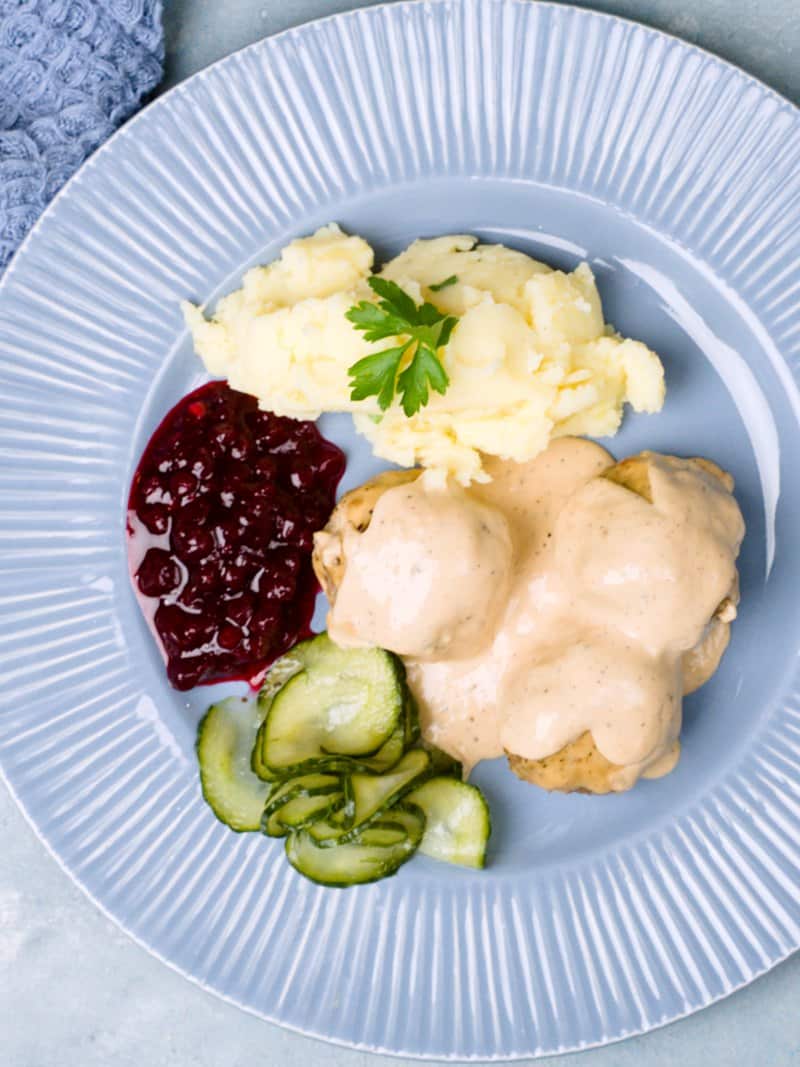
- Swedish Meatballs (Köttbullar): The most famous thing to eat with Swedish mash is a classic meal of meatballs, creamy sauce, lingonberry jam, and pressed cucumber.
- Grilled or Roasted Salmon: Consider adding a dill-infused sauce to enhance the Scandinavian flavors. Try out these grilled salmon foil packets.
- Oven-baked salmon: One classic northern dish is sour cream salmon. The mash goes perfectly with this dish.
- Meatloaf.-köttfärslimpa. Additionally, serve some creamy sauce, peas, lingonberry jam, and mash.
- Swedish sausages: Knackorv. This is a very typical simple dish that is especially a kids favorite. Try, for example, the frozen sausages from Ikea. Boil them for some minutes and serve with mash, ketchup, and mustard.
- Cabbage rolls-Kåldolmar: These rolls are also traditionally served with potato mash.
- Roast chicken: Mash serves as an excellent canvas for gravy, adding flavor to the meal.
- Pot roast: This classic dish craves mash or garlic potatoes.
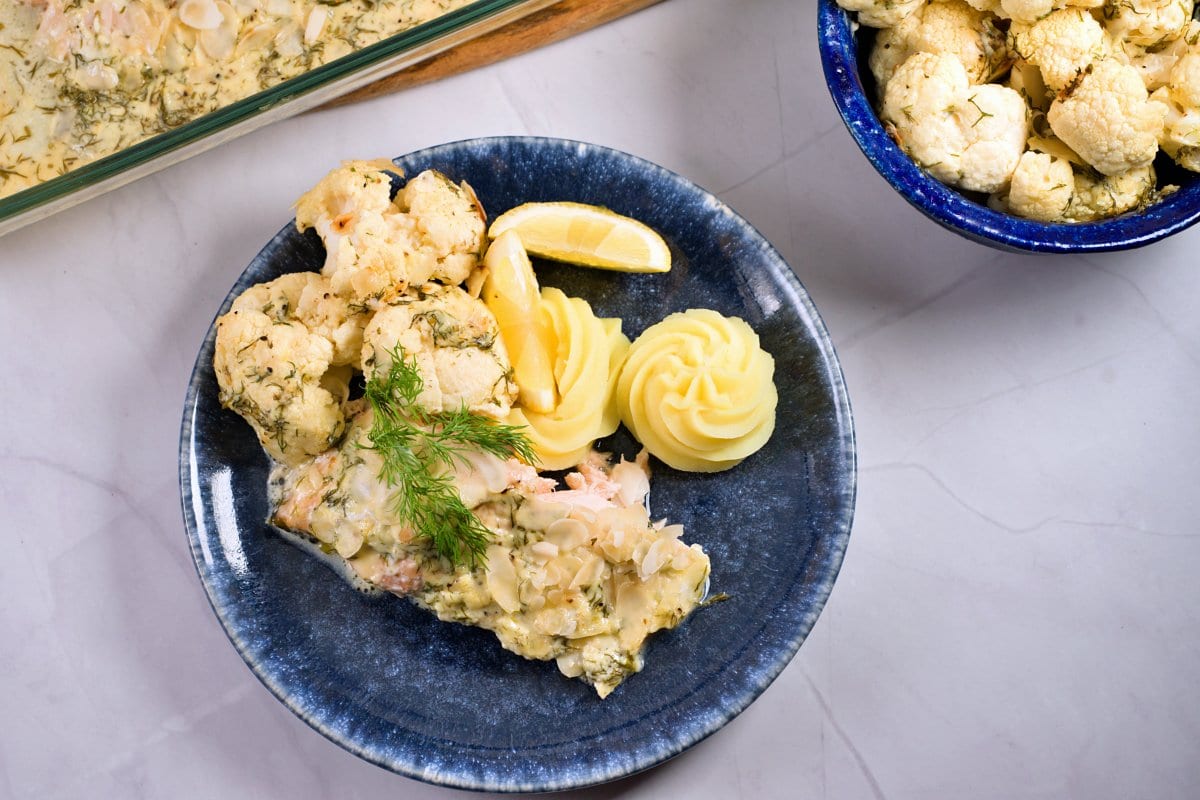
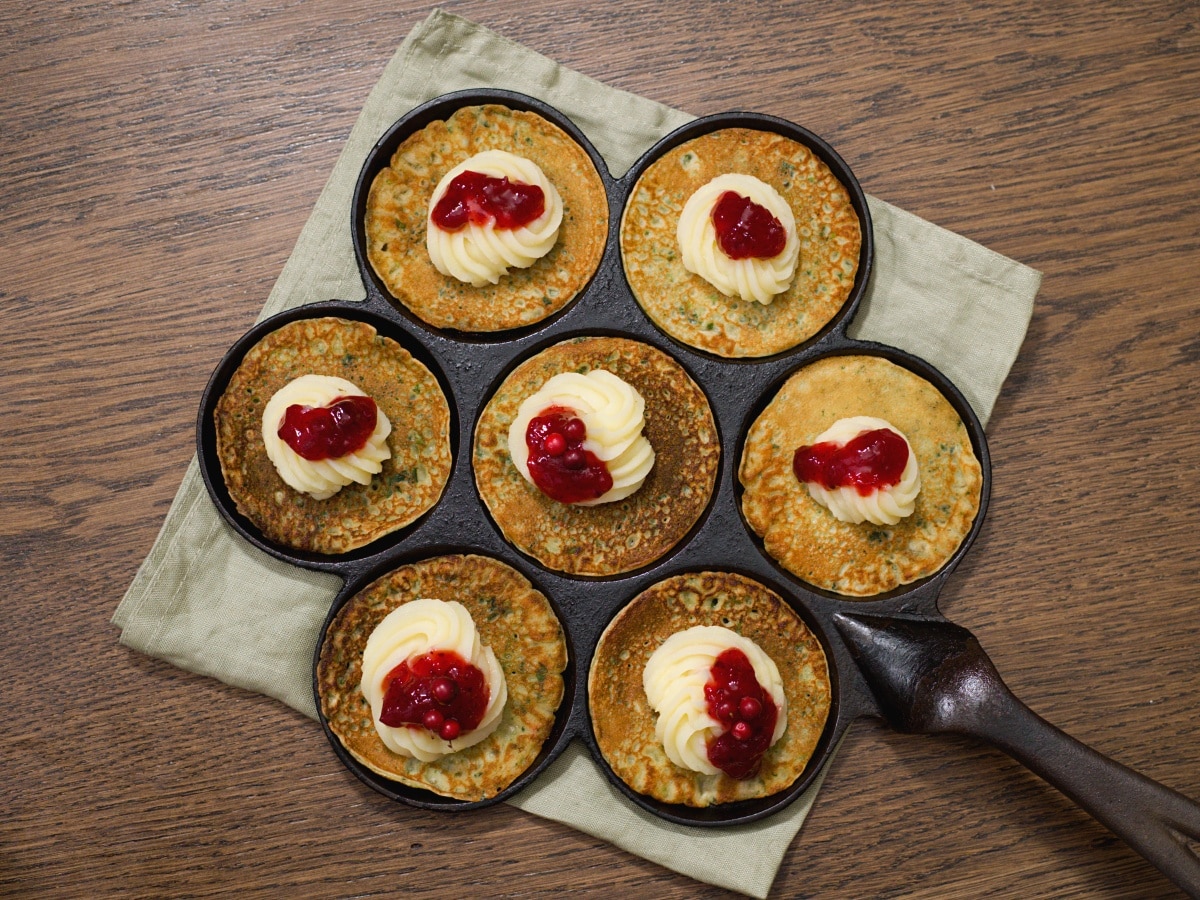
Tip: You can eat mash with some savory pancakes as well. For example, these spinach pancakes.
Tips for leftovers
I love to use my mash leftovers to make potato flatbreads. My mum used to toss leftovers in an oven pancake, especially if she made a savory version. Some crispy bacon bits go well in the batter, also.
Potato casserole is one option for leftover mash, but casseroles require quite a large amount, so if you made a double batch mash, you could make a classic köttfärs o potatisgratäng- a mince and mash casserole, eaten with lingonberry jam or with some ketchup.
Duchess potatoes are a fancy way of using leftover mash-you create the next culinary experience. Pipe the mixture onto a baking sheet with a piping bag and star nozzle and bake it until golden for delicious duchess potatoes.
To make potato pancakes, you need 2 cups of mash, 1 egg, salt, and some butter for frying. Flatten the batter with the back of a spatula or shape the mixture into chubby burgers. Fry until browned, about 3-4 minutes on each side. Serve with lingonberry jam.
Mash can also be used to make gnocchi. Mix in one egg and some flour to create a dough. Shape into small "dumplings" with a fork and boil in water until they rise to the surface.
Storing
Allow the mash to cool down. Transfer the leftover mash into an airtight container. Refrigerate the mashed potatoes within two hours of preparation. Store in the fridge for up to 2-3 days.
If you reheat on the stovetop, add some extra milk or butter to restore moisture and creamy consistency.
Mashed potatoes can be frozen. Place in a freezer-safe container, leaving some space for expansion. Thaw frozen mashed potatoes in the refrigerator before reheating.
I have made portion boxes with meatballs and mash, and they warm up well in the microwave for a quick lunch. Always reheat food to an internal temperature of 165F (74C) for food safety.
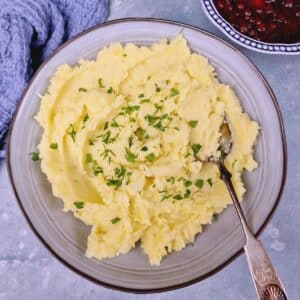
Swedish mashed potatoes
Equipment
- Potato ricer or potato masher
Ingredients
- 2 pounds potatoes 1 kg
- 2 tablespoon butter
- 1 cup milk (full fat is preferred) 2,4 dl
- ½ teaspoon white pepper
- 1 teaspoon salt-for boiling water
- ¼ teaspoon salt for the mash
- ¼ teaspoon ground nutmeg
- 2 tablespoon chopped parsley as decoration -optional
Instructions
- Peel the potatoes and rinse in water. Chop into same-size chunks. Add into a large pan. Cover with water and add 1 teaspoon salt.
- Bring to a boil, and boil until soft, around 15-20 minutes. Drain the potatoes using a colander.
- Push the potatoes through a ricer or use a potato masher tool.
- Add in the milk, butter, and spices and mix with the potato masher or use a hand mixer to beat the mash very gently. (The best result is if you warm the milk and butter in a saucepan or microwave before pouring it into the mash)
- If the mash seems too thick, add a bit more warm milk until you reach the desired consistency.
- Transfer the creamy mashed potatoes to a serving bowl and decorate with some chopped parsley or chives.


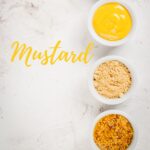


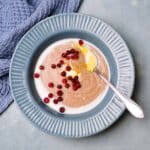
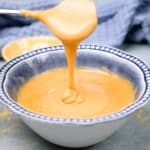

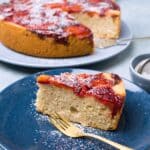
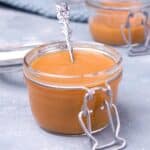
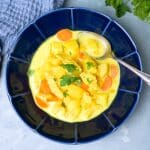
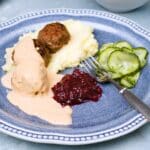

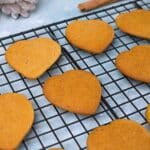
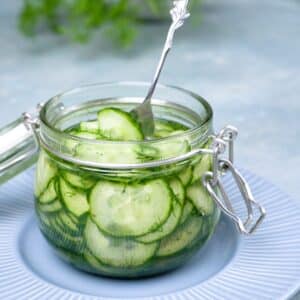
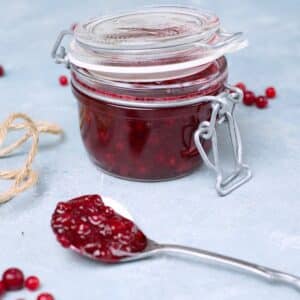
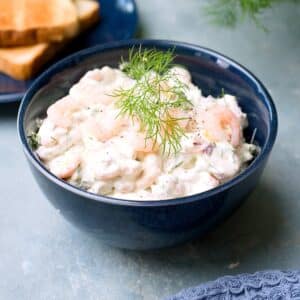
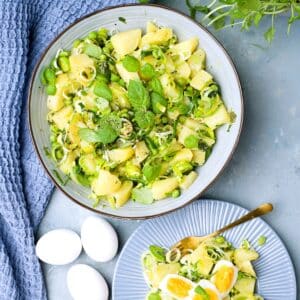
Leave a Reply